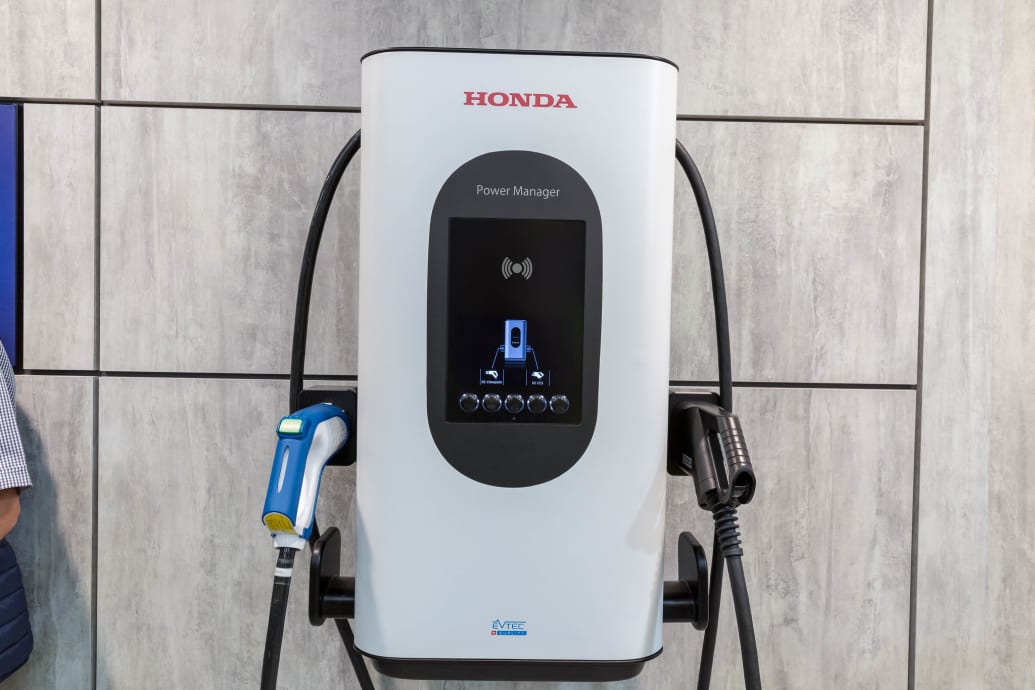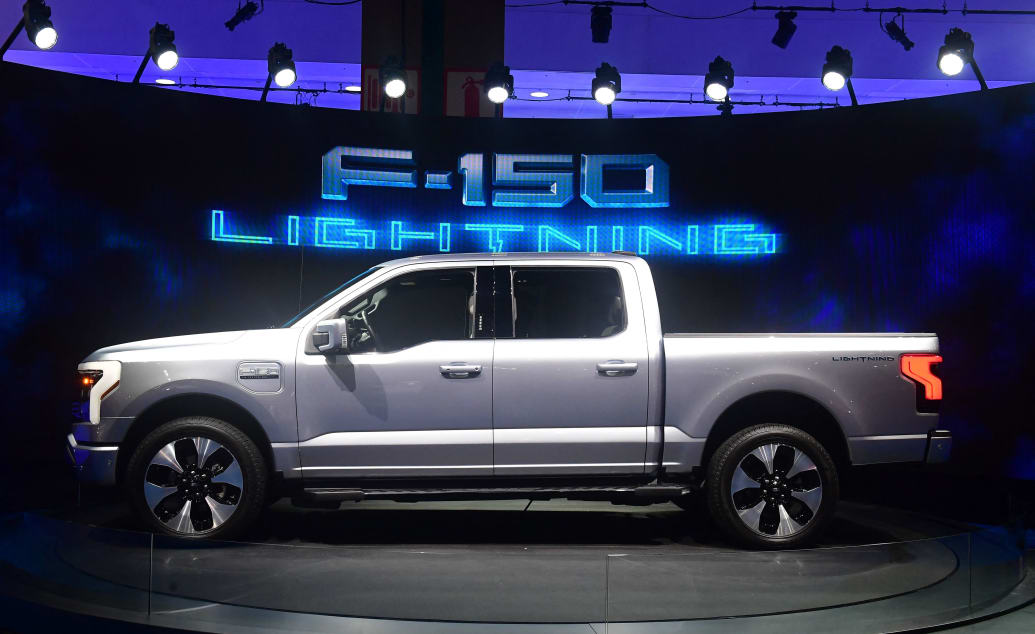More car-owners are switching to electric vehicles every year, but adoption is still much slower than many might hope. Although sales of EVs nearly doubled in 2021 from the previous year, there are still millions of passenger cars on the road, each spewing out about 404 grams of carbon dioxide every mile, making the transportation sector the worst greenhouse gas emitter in the country.
There are a myriad of reasons why many fleet and car owners have been reluctant to buy EVs, and one large concern involves the convenience of charging.
One way to knock down this reticence might be to unleash the power of the EV battery as a storage device, and not just for transportation. Bidirectional charging, also known as vehicle-to-everything (V2X) charging is quickly gaining traction among battery companies and car makers alike. The idea is basically to give an EV owner the ability to make use of the power that’s stored in their EV battery for a different purpose when the car isn’t in use. That energy could go from vehicle-to-grid (V2G), vehicle-to-building (V2B), or vehicle-to-home (V2H) when needed.
“There’s a lot more value to an EV battery than simply powering a car,” David Slutzky, the founder of Fermata Energy, a V2X technology company, told The Daily Beast. Creating more uses for these types of batteries may not only help push more consumers toward adopting EVs, but also help create a larger market for these types of batteries themselves.
Here’s how bidirectional charging works. When your local utility sees high demand, or when there are a lot of customers using power (usually during heat waves, or simply during the evening hours when everyone at home uses a lot of electricity), the software operated by V2X companies like Fermata lets customers know they should plug in their EVs into a bidirectional charger to push power back onto the grid. The utility gets additional power to distribute so the grid isn’t overloaded, and this can prevent price hikes when electricity usage is high (also known as peak demand). As the need for electricity dwindles during the night and rates decrease, consumers can charge their EVs and wake up to a full battery in the morning.
You need several things to make this work: an EV with bidirectional capability, a bidirectional charging station, plus your local utility must have a demand response program (an agreement where utilities pay customers to use less electricity during peak hours) that you can sign up for. In the end, pushing energy back on the grid can either shave money off your monthly utility bill, or hand money right back to you, said Slutzky.
And from an energy resilience perspective, the ability for an EV to become a mobile back-up power source becomes more important as power outages have become more common due to extreme weather events, said Ladeene Freimuth, the founder of energy consulting firm The Freimuth Group, and a senior adviser to energy security non-profit SAFE.

Honda’s Power Manager bidirectional charging device that connects electric vehicles to a smart power grid.
Marco Verch via Flickr
“The fact that V2G can provide an additional revenue stream for EV owners will pave the way for wider adoption,” Freimuth told the Daily Beast.
In one pilot program, Fermata found that by plugging in one Nissan LEAF (the only EV with bidirectional charging capabilities on the market in the U.S. today), the Burrillville Wastewater Treatment Facility in Rhode Island received a check for $4,000 in three months by participating in a program called behind the meter demand charge management with National Grid, the local utility. Another ongoing Fermata pilot program in Boulder, Colorado is finding that one EV saved a recreational center an average of $270 per month when power was put back when electricity usage peaked in the building, according to Slutzky.
“This may not seem like a lot of money to some people, but it’s savings over time that’s also environmentally sustainable and making use of what you already own,” Slutzky said. He envisions the V2G market first taking off for commercial businesses, like municipalities and logistics firms that will own fleets of EVs.
Bidirectional charging technology has really been around for years—Nissan has run its own “LEAF to Home” program since 2012. Many more car makers are beginning to jump on the bandwagon thanks to major increases in EV battery storage capacity. The new Ford F-150 Lightning hitting the market this spring will have bidirectional capabilities, and auto makers including Volvo, Volkswagen, Hyundai, Rivian, and others have announced they will bring their own bidirectional charging EVs to market over the next several years.
“The table has definitely turned in the last five years.”
— Lynn Ames, Nuuve
The stars seem to be aligning in other critical ways, too. More utilities are willing to launch V2G demand response programs. Companies like Blink Charging and Wallbox are putting new bidirectional charging stations on the market. In addition, Freimuth said applicants who want a piece of the $2.5 billion available in competitive federal grant funding for EV charging projects under the Bipartisan Infrastructure Law must consider including V2G technology.
“The table has definitely turned in the last five years,” Lynn Ames, vice president of partnerships at V2G company Nuvve, told The Daily Beast. “In the past, I was educating everyone about the technology,” she said. Nowadays, it’s car makers and parts manufacturers calling her up directly to look for ways to break into the bidirectional charging market.
Nuvve works with, among others, municipal bus operators in the U.S. to help save money on their utility bill. Through its joint venture firm Levo Mobility, the company will be providing V2G services for the 64 buses operated by the Troy Community Consolidated School District 30-C in Illinois. Nuvve has run programs for school districts in Torrance and Rialto, California.
Now the firm is expanding into the residential market. It has partnered with Swell Energy, a residential solar storage developer, to tie together an existing solar system, energy management software, bidirectional charger, and EV so the homeowner can create their own virtual power plant.
Ford also has the same idea in mind: The motor giant said it will set up a pilot program with California’s PG&E to see whether the Lightning can provide back-up power to a home when the grid is overloaded.
But the big question that will be at the forefront of consumers’ minds: How long can your EV battery power your home? The standard Ford F-150 Lightning comes with a 98 kWh battery. (The Nissan LEAF’s standard battery is 40 kWh.) The average U.S. household uses 893 kWh of electricity per month, or 29 kWh per day, which means you can power your home for about three days with a Lightning and two days with a LEAF.
Will the concept take off with consumers? Some naysayers of bidirectional charging say pushing power back out of your battery will lead to degradation and shorten the battery’s life cycle. EV owners are encouraged to purchase a new battery after every 65,000 miles, and new batteries start at around $5,000, so most consumers would be extremely cautious about doing anything that might force them to shell out that kind of money more frequently.
Fermata’s Slutzky countered that car and battery makers wouldn’t embrace the technology if they thought it would be damaging to the battery and overall safety of the car. But independent studies have found conflicting support. A 2017 report by researchers at the University of Hawaii at Manoa found that batteries that pumped power back onto the grid via V2G shortened the battery’s life cycle to under five years. Scientists at the University of Warwick found that in the presence of technology that calculates battery degradation, V2G could actually extend the life cycle of the battery because software can automate when and when not to pump back power into the grid.

The all-electric F-150 Lightning from Ford, on display at the Los Angeles Auto Show on November 18, 2021.
Frederic J. BROWN / AFP via Getty Images
Automakers might also have concerns with their warranty agreements if the battery is not used for solely operating the vehicle, Freimuth added.
As long as participation is easy, like customers getting a ping on their phones that lets them know the optimal time to charge or put power back on the grid, Slutskzy thinks EV owners would readily sign up for demand management plans. Freimuth also said the availability of federal tax incentives and credits under the new Infrastructure Law should help reduce up-front costs to facilitate wider adoption.
But if you’re the type of person who always needs an EV fully charged at all times, then this is not for you, Slutsky said.
“Whenever I make my sales pitch, I always say the software and hardware that will help you save money from V2G is available,” he said. “It’s their call whether they want to use it or not.”